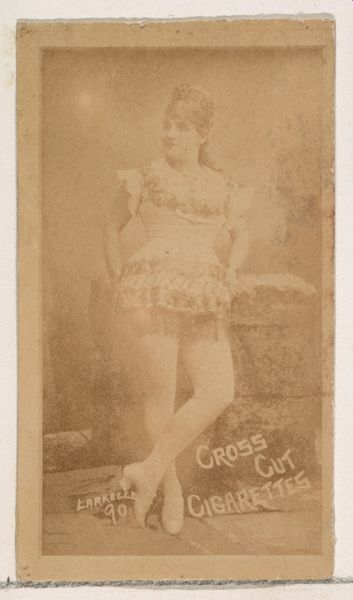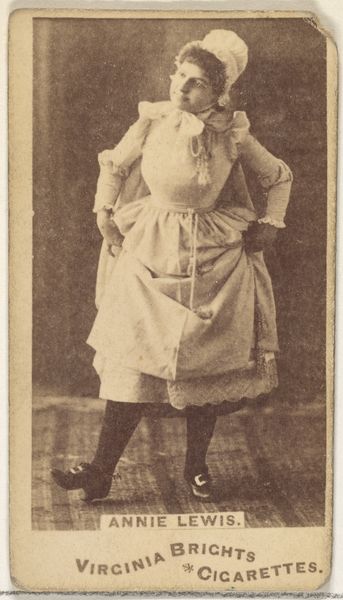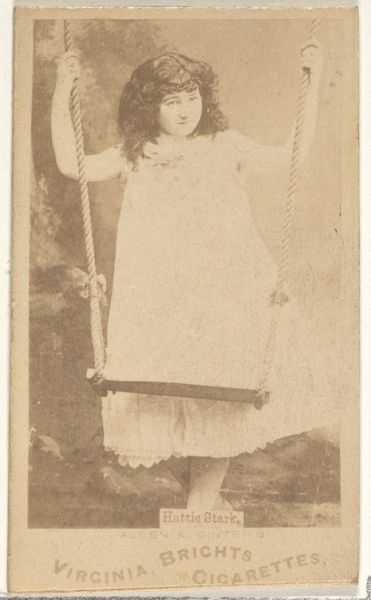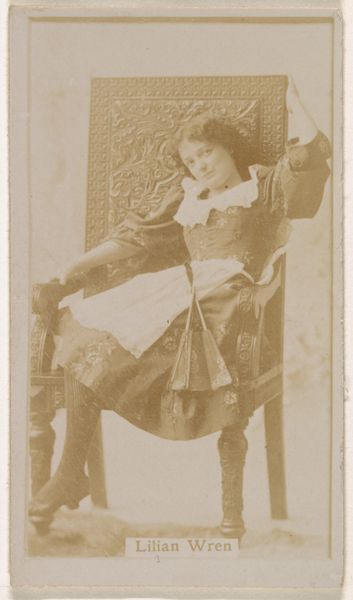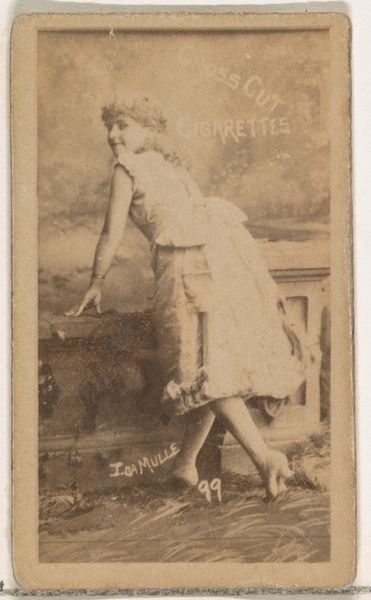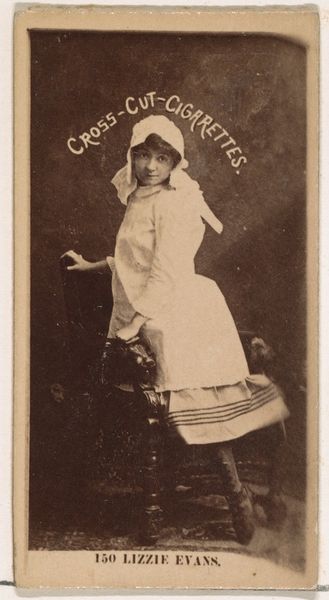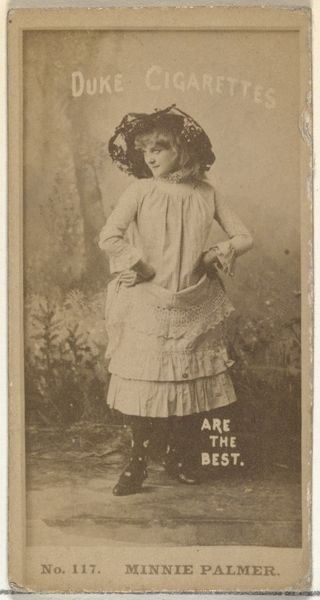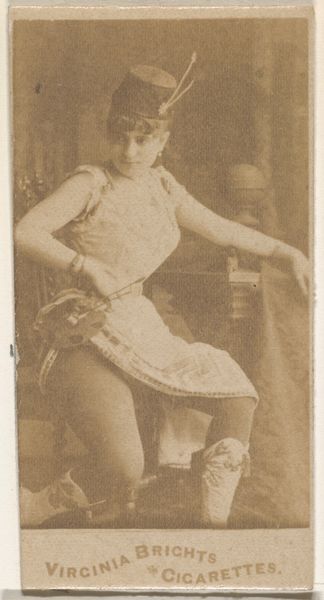
Card Number 194, Louise Paullin, from the Actors and Actresses series (N145-1) issued by Duke Sons & Co. to promote Cross Cut Cigarettes 1880s
0:00
0:00
print, photography, albumen-print
#
portrait
# print
#
photography
#
coloured pencil
#
albumen-print
Dimensions: Sheet: 2 1/2 × 1 3/8 in. (6.4 × 3.5 cm)
Copyright: Public Domain
Curator: This albumen-print photograph is a promotional card from the 1880s, issued by W. Duke, Sons & Co. to advertise Cross Cut Cigarettes. It features actress Louise Paullin, identified as Card Number 194 within the "Actors and Actresses" series. Editor: There’s an interesting contrast here. Her wistful expression, framed by delicate curls, clashes so dramatically with the crass commercial function of the card. There's a story brewing in this juxtaposition. Curator: Exactly. The albumen print was a relatively new process at the time, becoming the standard for commercially produced photographic prints. It's essentially mass production of images intersecting with portraiture and entertainment culture. Consider the labor: the photographers, the actors, the factory workers churning out these cards. It highlights the industrialization of leisure. Editor: And it highlights the objectification of women, doesn’t it? Louise Paullin isn’t presented as an individual here; she’s a commodity. She becomes this generalized ideal marketed alongside a product that was also causing illness and early death, mind you. It all speaks to larger structures of power. Curator: Agreed. The photographic process itself—the alchemy of chemicals, light, and paper— transformed into capital. It is quite stunning to consider the infrastructure necessary to produce these. Editor: I see a microcosm of late 19th-century social dynamics. We’re not just looking at a pretty face. We’re seeing the intersections of labor, consumption, and gender roles – all packaged into something seemingly so trivial. The image is a signifier within a network of industrialization and advertising that impacted everything. Curator: Yes, absolutely. I find myself pondering the very tactile nature of these cards—they were intended to be held, traded, collected... everyday objects used and circulated within society. It all reflects consumer culture becoming increasingly driven by these types of commercial exchanges. Editor: Precisely. Viewing it through a contemporary lens forces us to unpack how capitalist marketing strategies have consistently relied on the commodification of identity. Curator: What began as a seemingly straightforward promotional item is much more than a mere portrait. It offers critical insights into the machinery of production, circulation, and reception of both goods and cultural values. Editor: A potent little document, indeed. Something so small reveals something very grand, dark, and historically meaningful.
Comments
No comments
Be the first to comment and join the conversation on the ultimate creative platform.

